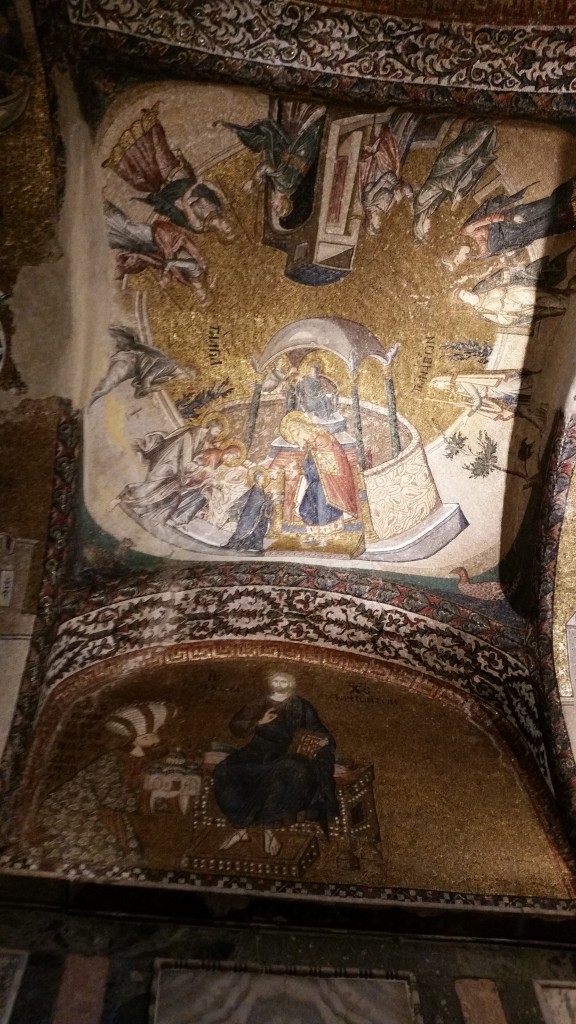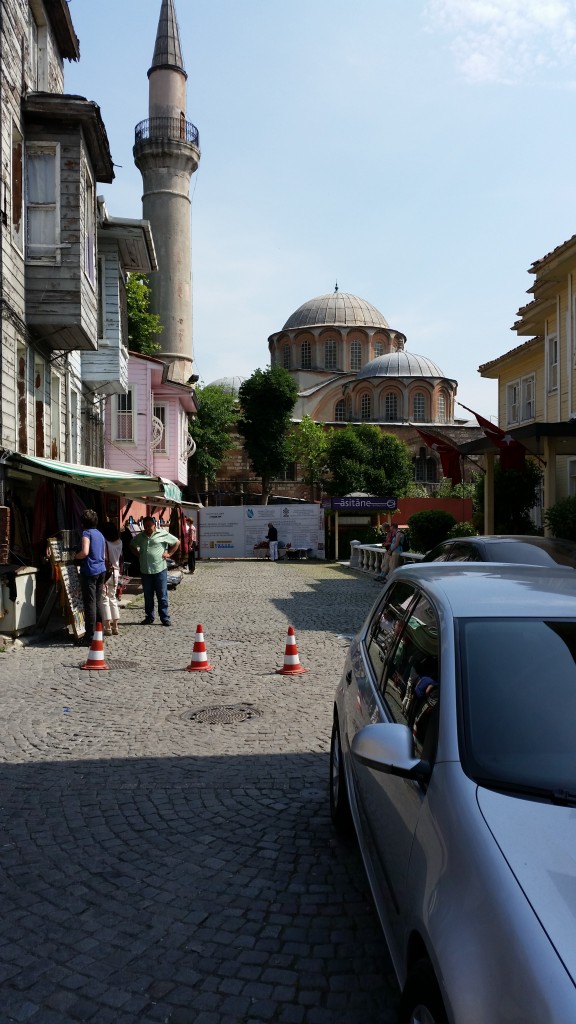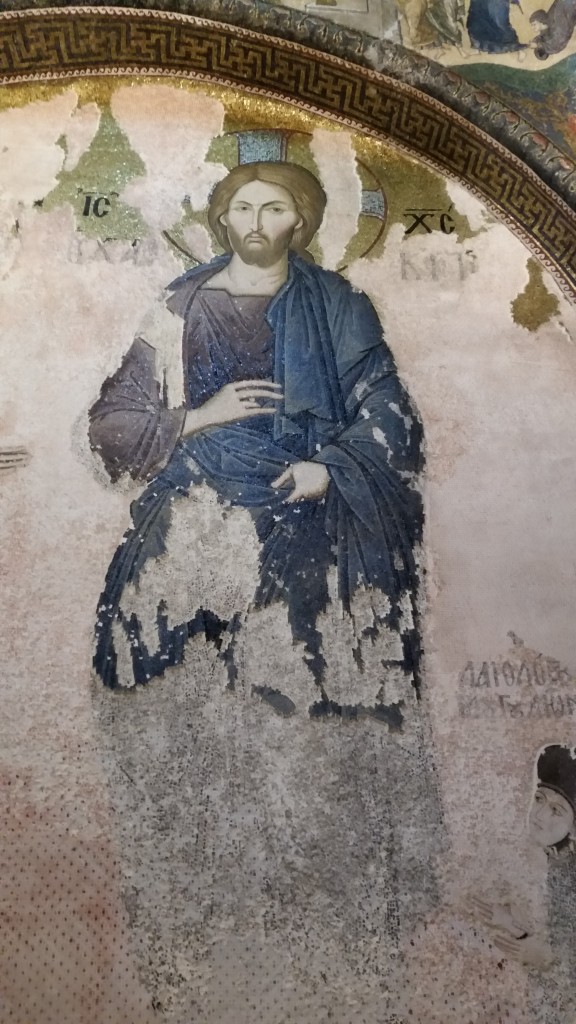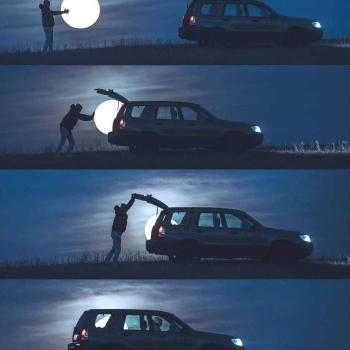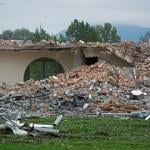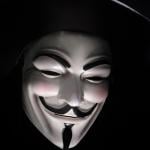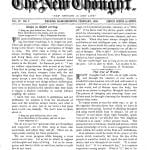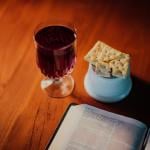One of the more important churches (now a museum) in all of Turkey is the famous Chora Church, so-called because it was out in the country originally. Now it’s in a crowded Istanbul neighborhood, which makes it difficult to even get a picture of the building. So you have to settle for a picture from a distance…
Or you have to settle for a picture of a picture…
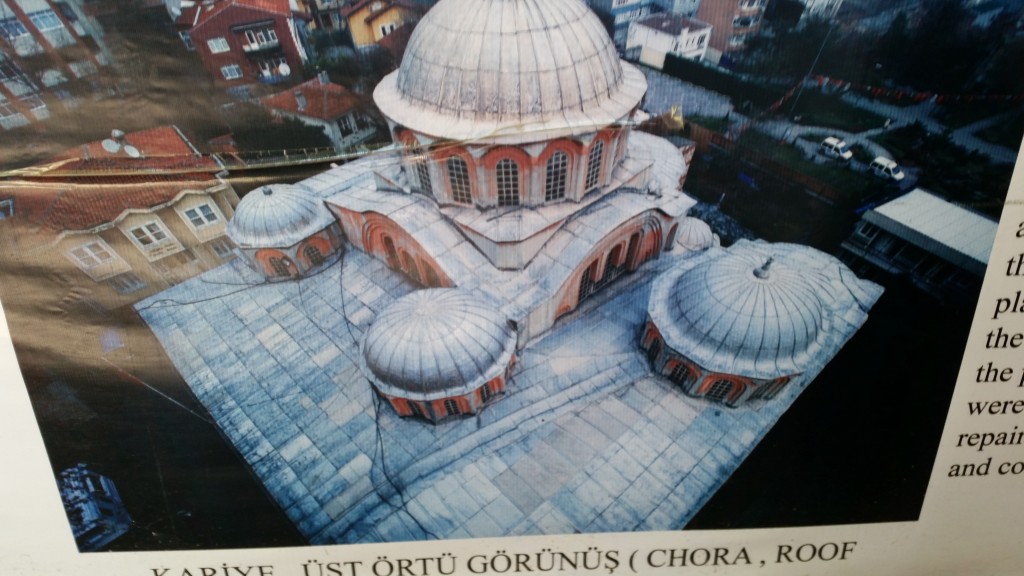
Then you run the gauntlet of the vendors, the hawkers of icon copies and Iznik tile copies…
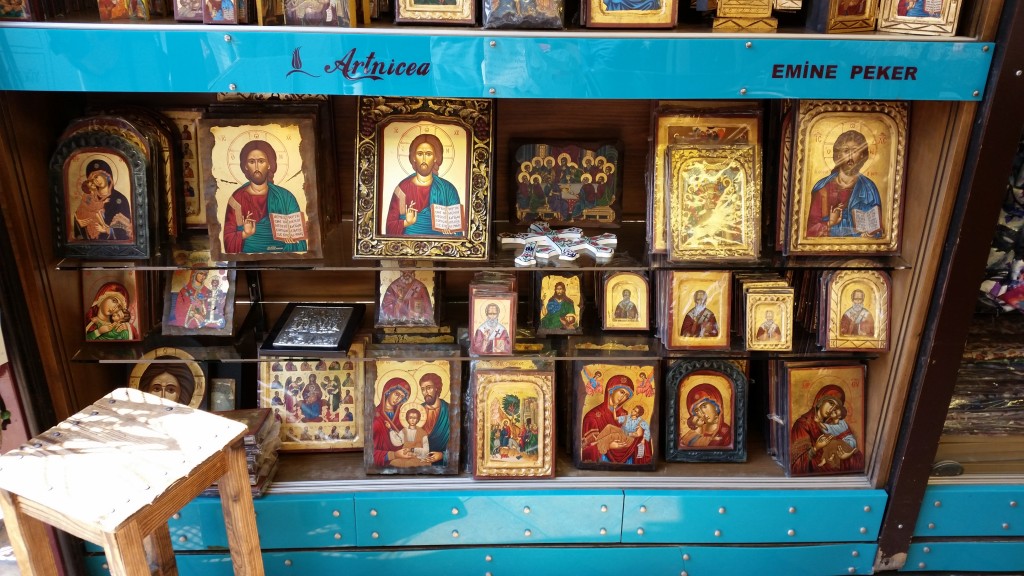
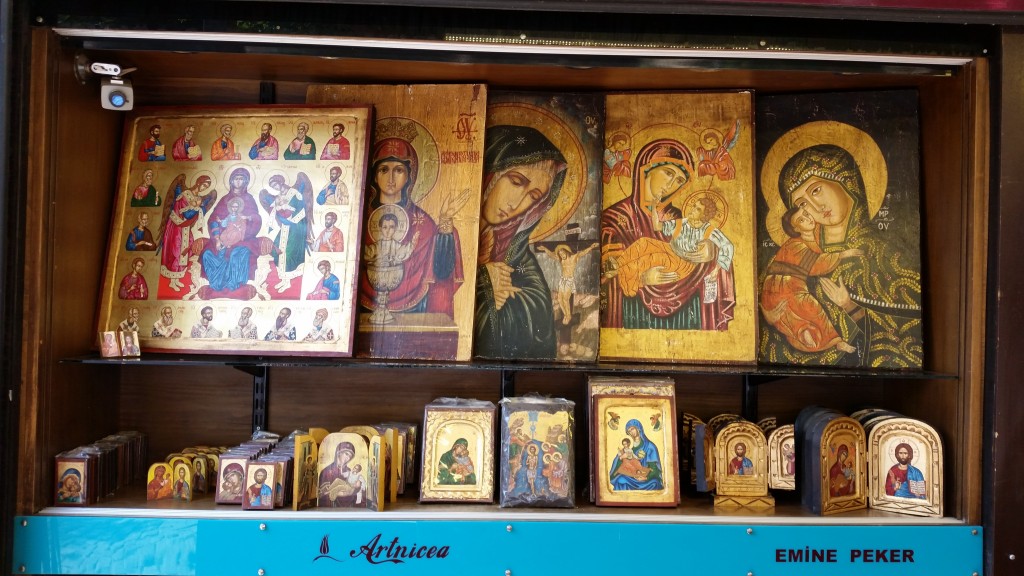
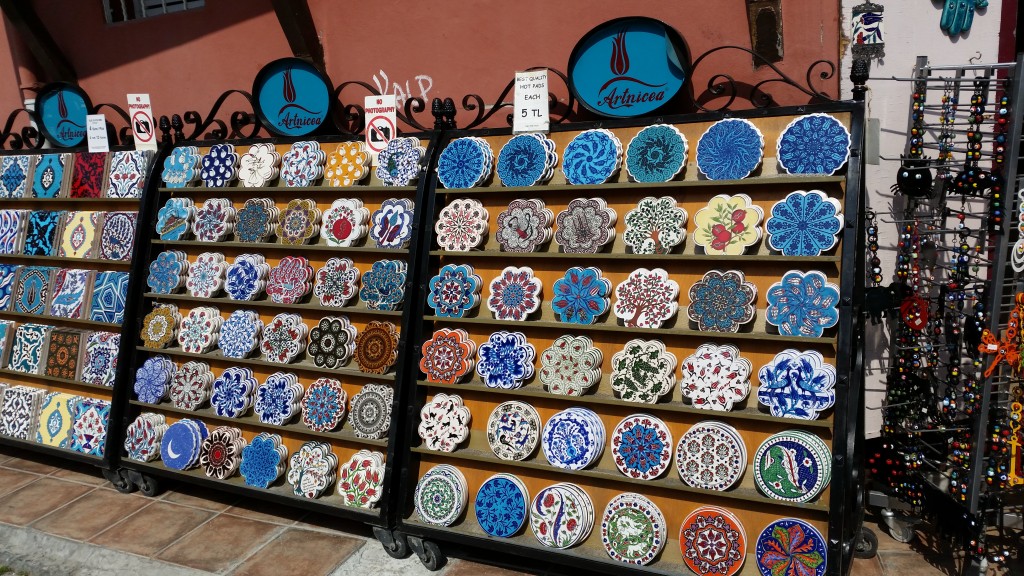
Here is a brief anonymous summary about the history of this church from the choramuseum.com site….
“It is known that there was a chapel outside of the city before the 5th century when the city walls were erected. The first Chora Church was rebuilt by Justinianus (527-565) in place of this chapel. In the era of Komnenoi, it served as the court chapel for important religious ceremonies, thanks to its nearness to the Palace of Blachernae.
The church was destroyed during the Latin invasion (1204-1261) and repaired in the reign of Andronikos II (1282-1328) by the Treasury Minister of the palace, Theodore Metochites (1313). It was expanded towards north, an exonarthex was added to its western side and a chapel (Parecclesion) to its southern side, and it was decorated with mosaics and frescoes.
The mosaics and frescoes in the Chora are the most beautiful examples dating from the last period of the Byzantine painting (14th century). The characteristic stylistic elements in those mosaics and frescoes are the depth, the movements and plastic values of figures and the elongation of figures.
After continuing to serve as a church following the conquest of Istanbul in 1453, the building was converted into a mosque in 1511 by Vizier Hadim Ali Pasha. It was converted into a museum in 1945, and during the restoration in 1948-1959 carried out by the Byzantine Institute of America, the mosaics and frescoes were uncovered and brought to the daylight.”
What this quote says about the quality of the mosaics and frescoes is absolutely true, as we shall now demonstrate. Unfortunately when we visited this time, some of the building, including the main sanctuary were under restoration…. here is the main thing we did NOT see this time…
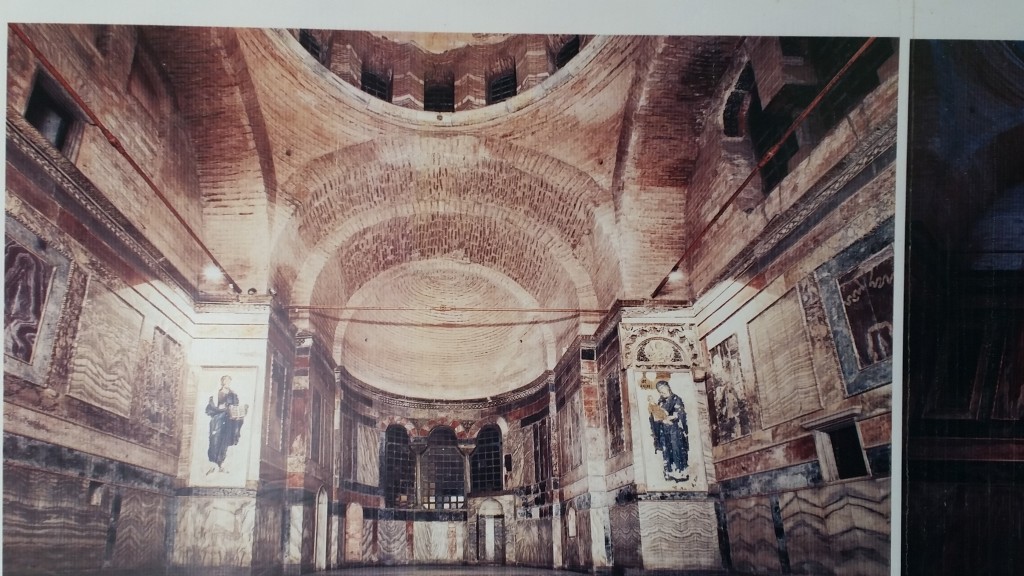
Some of the most famous mosaic images of Christ come from this very church, and are regularly used in Turkish and other sorts of advertisements… for example this one.
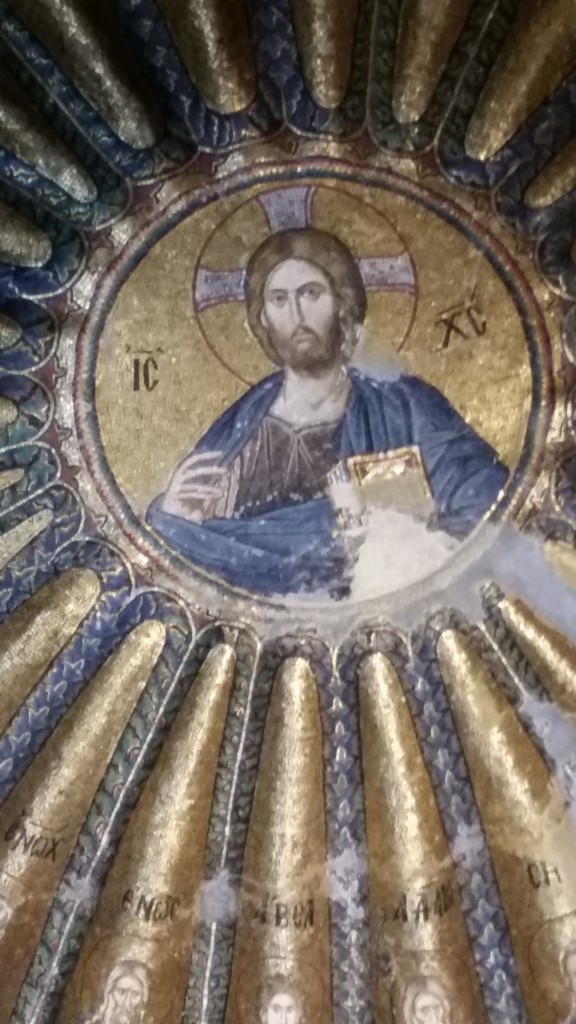
And the same can be said about images of Peter and Paul….
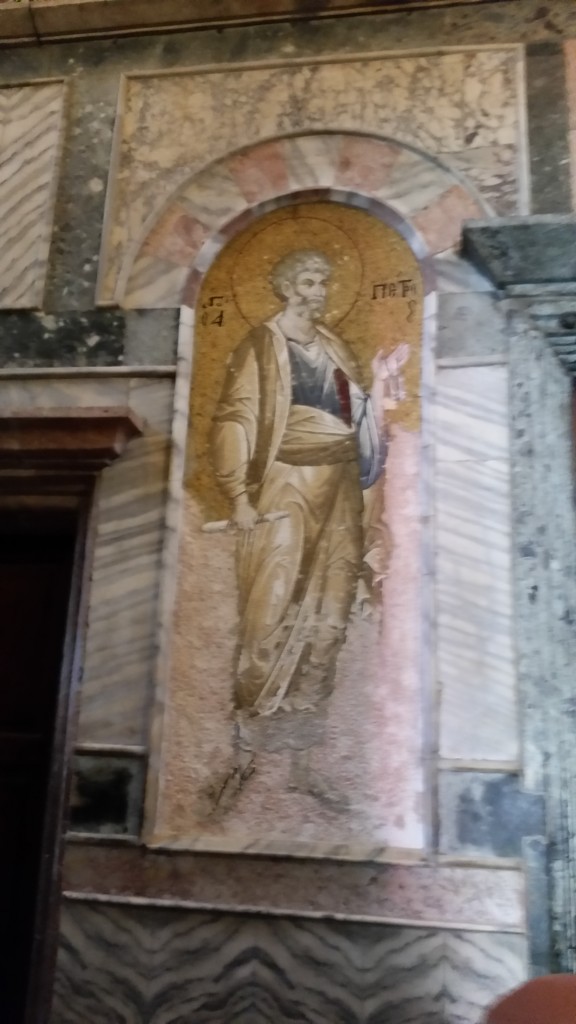
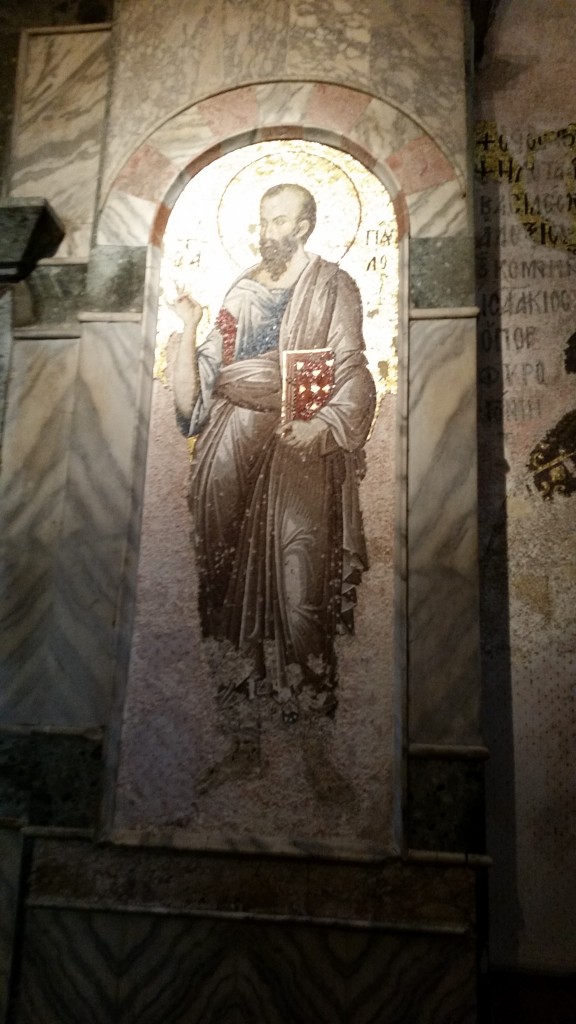
A couple of clues as to how and interpret the symbols in these icons. Firstly, the color dark blue is important. It is the color of purity, and when the under-garment on the saint is blue, it is referring to purity of heart, inner purity. Secondly, nothing in the depiction is without some symbolic significance. So for example in the picture of Peter you see an emphasis on him holding the keys to the kingdom, but in his other hand he has a tiny scroll. This is because he did not write much, canonically speaking. Contrast that with Paul who is carrying a weighty volume (i.e. thirteen NT documents worth). Then too the very physical appearance of the saint is important. Here’s one example— when you see someone with a large forehead, this usually signifies not a big brain, or even just lots of knowledge but rather great wisdom. Mostly Christ and the saints are depicted in a glorified state in the domes. And on their best earthly day, when depicted elsewhere. In part this is because icons and iconic images are seen as windows on heaven, glimpses into heaven where God and the saints dwell. Mostly when you see the saints in glory, they are depicted with halos, and of course the domes of a church like Chora Church. For instance, here is one of the domes in this church…
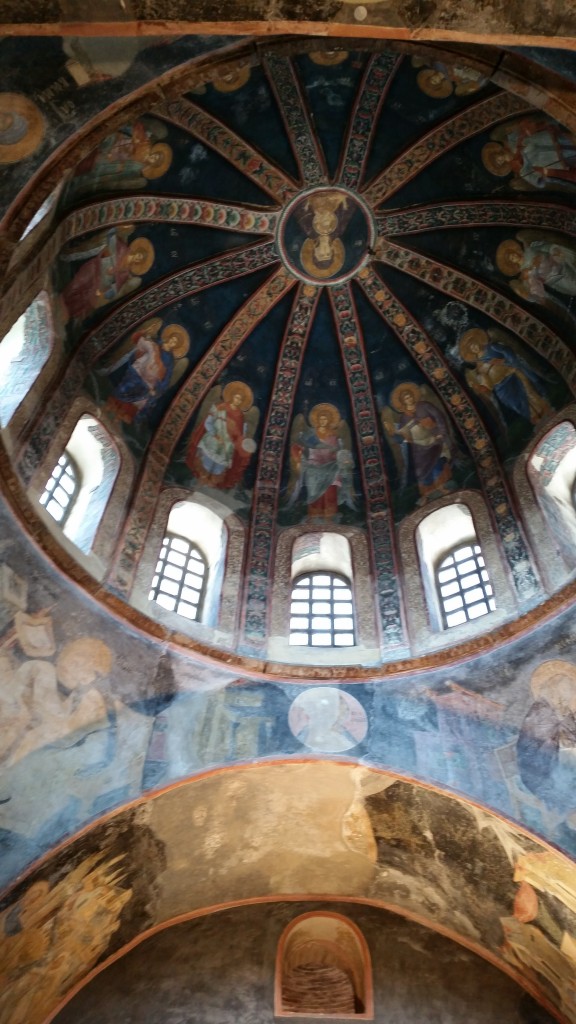
Or consider this one, and notice that Christ or Mary are always depicted at the apex of the dome, the highest part of heaven, so to speak.
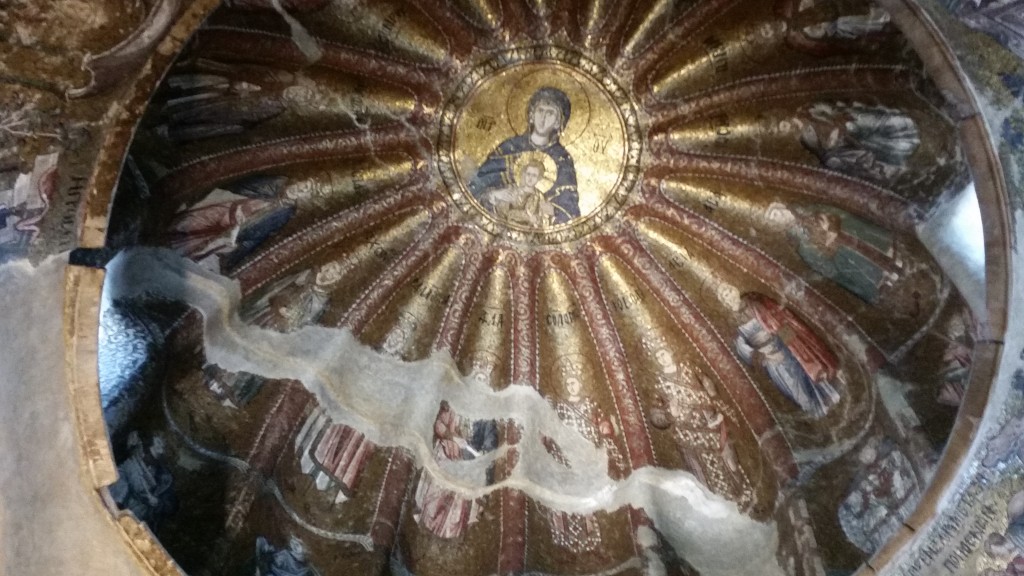
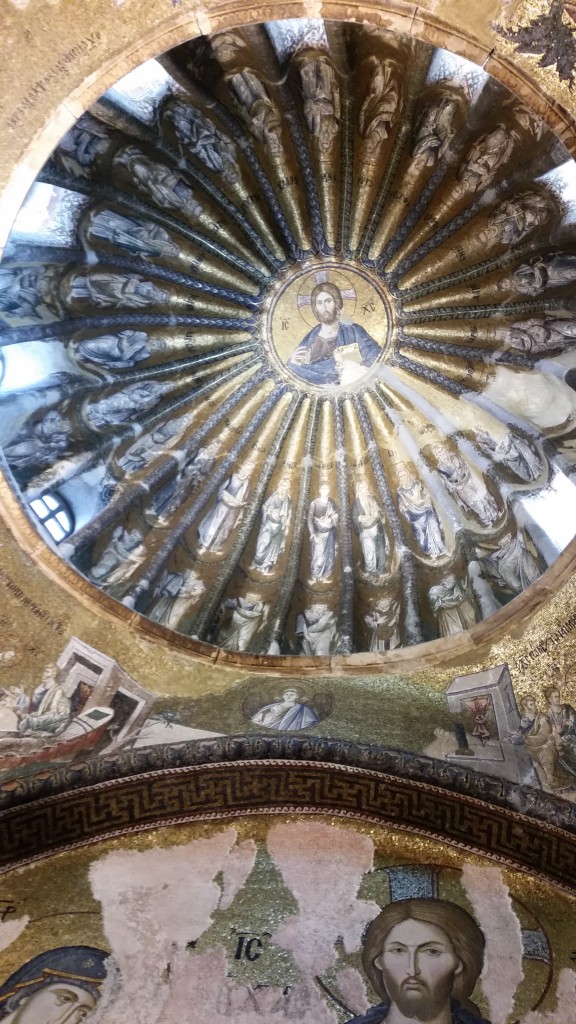
Some of the iconic images depict stories both Biblical and occasionally post-Biblical Christian stories. Some along with Christ here, we see the depiction of ‘the first miraculous sign’ the story of Cana above and to the left of his head…
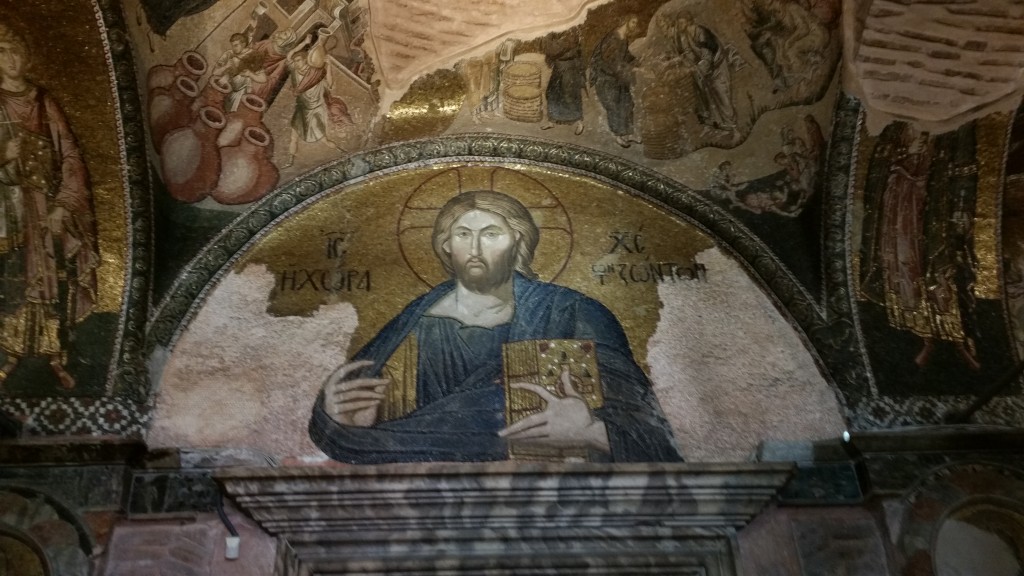
Or in this one we see John the Baptizer pointing to Jesus and saying ‘Behold the lamb of God…’
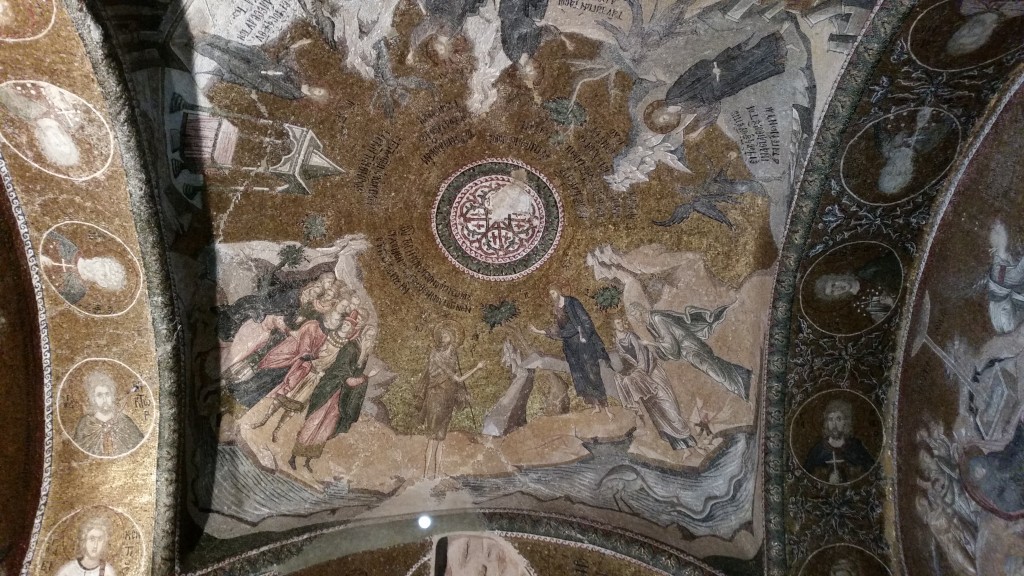
Here we see Quirinius the governor of Syria sitting on the throne, setting up the census and taxation which took Mary and Joseph to Bethlehem…
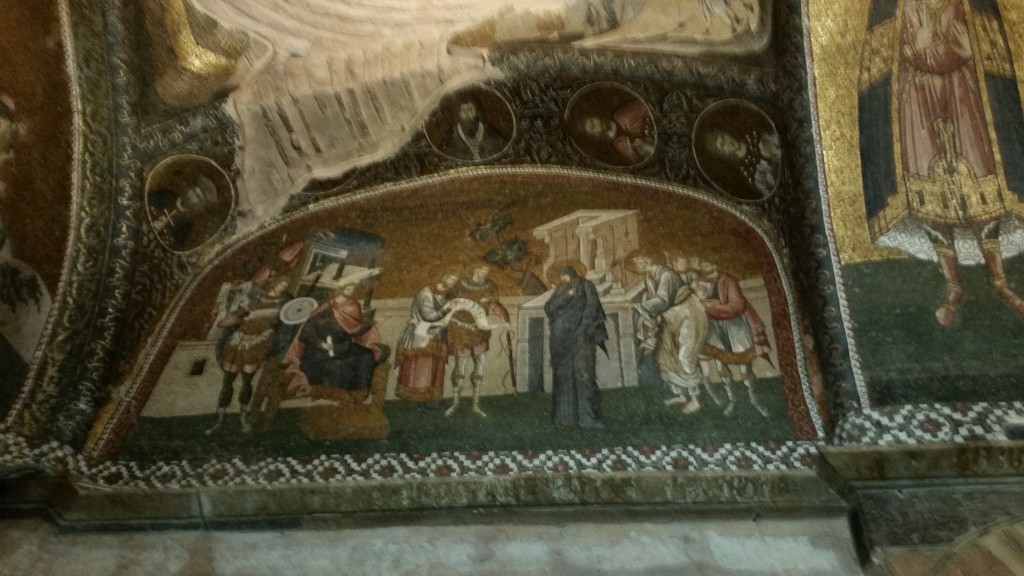
On the right side of the building there is a burial chapel, which has frescoes rather than mosaics. The depictions of the saints and Christ etc. are very much the same, but the medium used to convey the pictures is noticeably different.
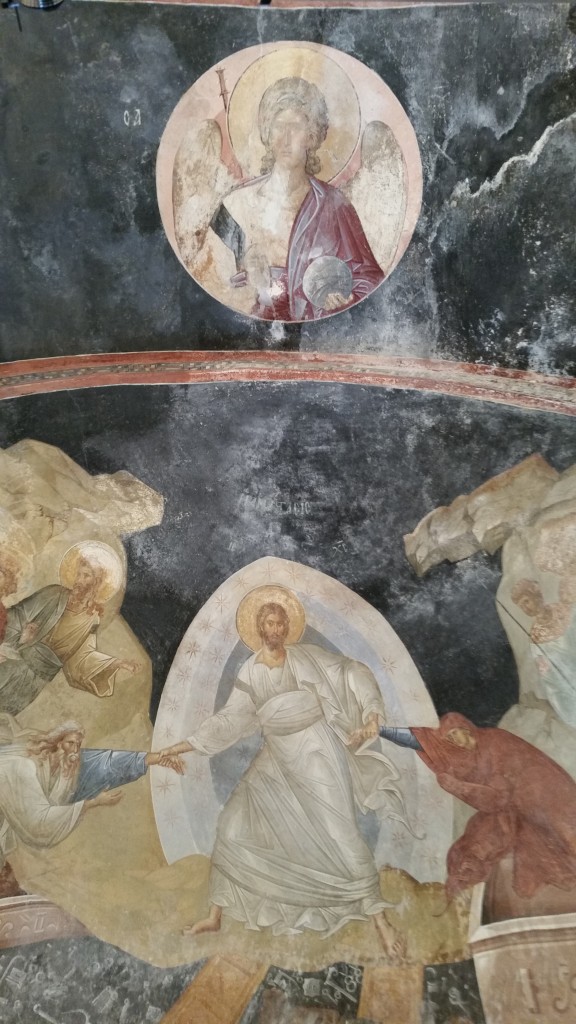
This is a famous scene in the Orthodox tradition. It depicts St. Michael at the top of the dome, and below that it is Christ harrowing Hell, dragging Adam and Eve out of their sarcophagi and the underworld.
We have in this same medium a depiction of the great doctors of the churches, according to the Orthodox tradition (those credited with setting up the Byzantine liturgy)— St. Basil, John Chrysostom, Gregory the Great next to Basil, Athanasius next to Chrysostom and so on….
To give you a sense of the overall space in this chapel and the placement of the images, consider this…
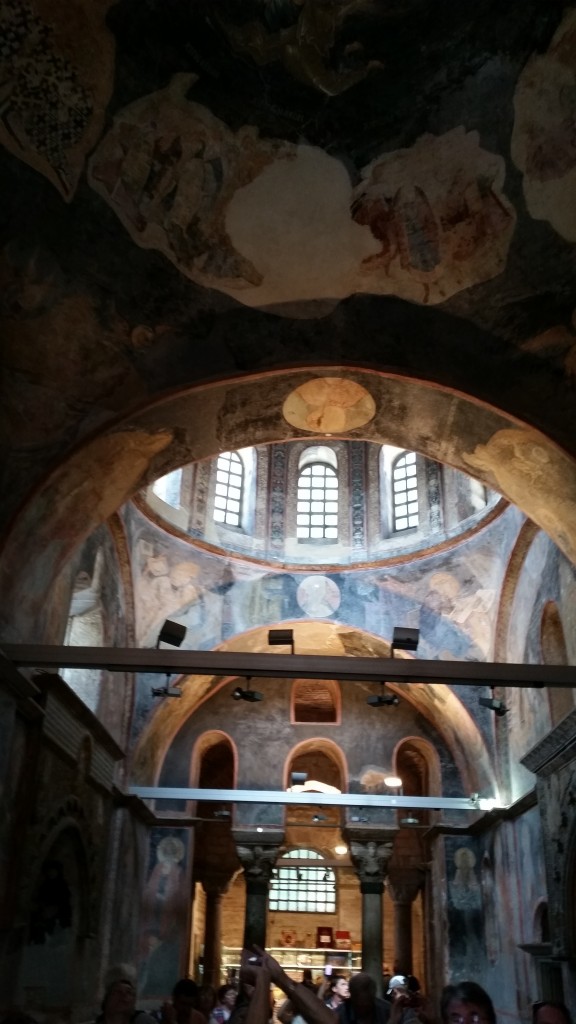
For my part I prefer the mosaics to the frescoes, for example look at this poignant depiction of Mary…

Or here is Christ and the rich young ruler…
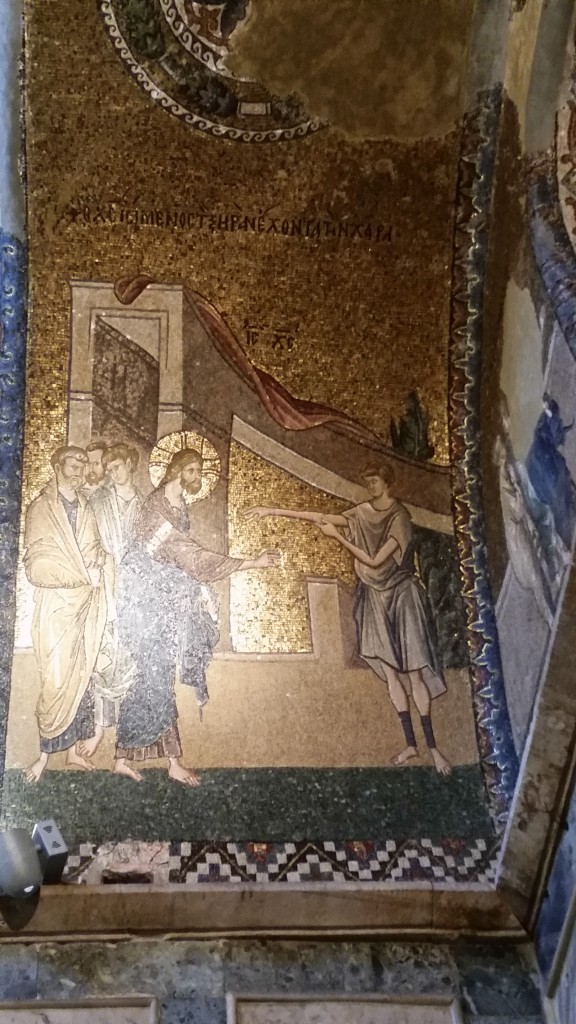
Or here finally the nativity scene…under a stone cupola (who knew)….
